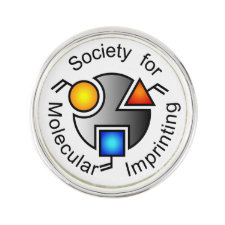
Authors: Li MF, Wang B
Article Title: Preparation of chloramphenicol imprinted polymer membranes and its adsorption characteristics.
Publication date: 2012
Journal: Journal of Tianjin Polytechnic University
Volume: 31
Issue: (2)
Page numbers: 10-14.
Alternative URL: http://en.cnki.com.cn/Article_en/CJFDTOTAL-TJFZ201202004.htm
Abstract: By using chloramphenicol as template, 4-vinylpyridine as functional monomer and porous polypropylene nonwoven as the support membrane, chloramphenicol imprinted polymer membranes with predominant recognition and selectivity are prepared through in-situ polymerization by UV irradiation. The interaction between chloramphenicol and functional monomer is verified by UV-visible spectroscopy. The morphologies of chloramphenicol imprinted polymer membranes with different PEG dosage are observed by the scanning electron microscopy (SEM). The binding characteristics of the imprinted membranes are studied by the equilibrium binding experiments and specific adsorption experiments. The results show that hydrogen bonding is formed between template molecule and functional monomer. When the mass fraction of PEG is 16%, the prepared imprinted polymer membranes have perfect morphologies and uniform pore structure. It is found that the imprinted polymer membranes show good recognition characteristics to chloramphenicol and the max binding amount reached 22.83 μmol/g
Template and target information: chloramphenicol
Author keywords: Adsorption characteristics, chloramphenicol, molecularly imprinted polymer membranes, morphology



Join the Society for Molecular Imprinting

New items RSS feed
Sign-up for e-mail updates:
Choose between receiving an occasional newsletter or more frequent e-mail alerts.
Click here to go to the sign-up page.
Is your name elemental or peptidic? Enter your name and find out by clicking either of the buttons below!
Other products you may like:
 MIPdatabase
MIPdatabase









